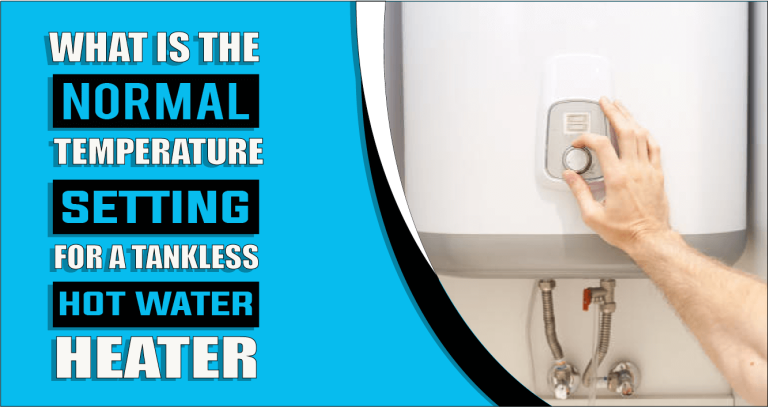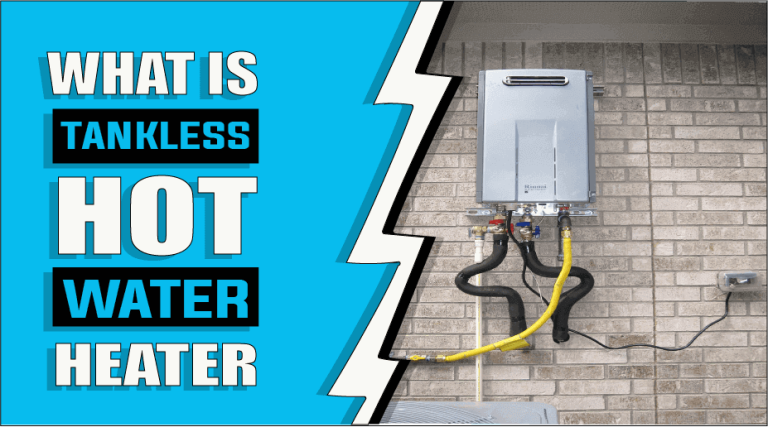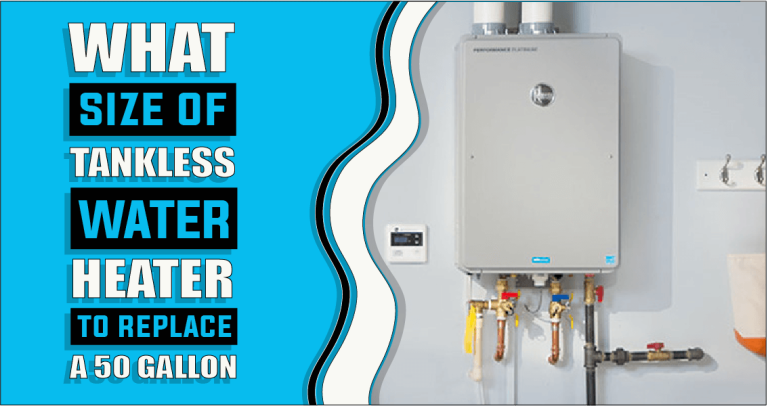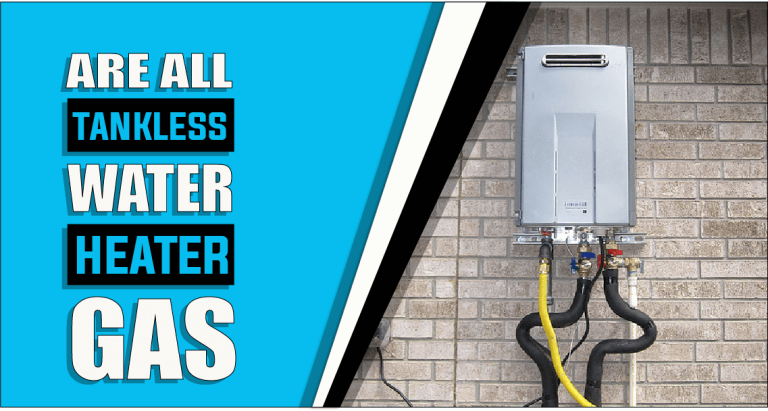What size tankless water heater do you need | Finding the Perfect Fit
Are you tired of running out of hot water in the middle of a shower? Or maybe you want to upgrade your traditional water heater to a more efficient and space-saving option. Whatever the case, choosing the right size tankless heater is essential. Tankless water heaters, also known as on-demand water heaters, provide hot water instantly without needing a storage tank. But how do you determine what size tankless heater you need? The size of a tankless heater is measured in gallons per minute (GPM), which refers to the amount of hot water it can produce per minute. To find the right size for your household, consider the number of bathrooms, appliances, and simultaneous hot water demands. A general rule of thumb is that a typical shower uses around 2.5 GPM, while a dishwasher or washing machine may require 1-2 GPM. Are you eager to discover more about what size tankless heater you need? Keep reading!
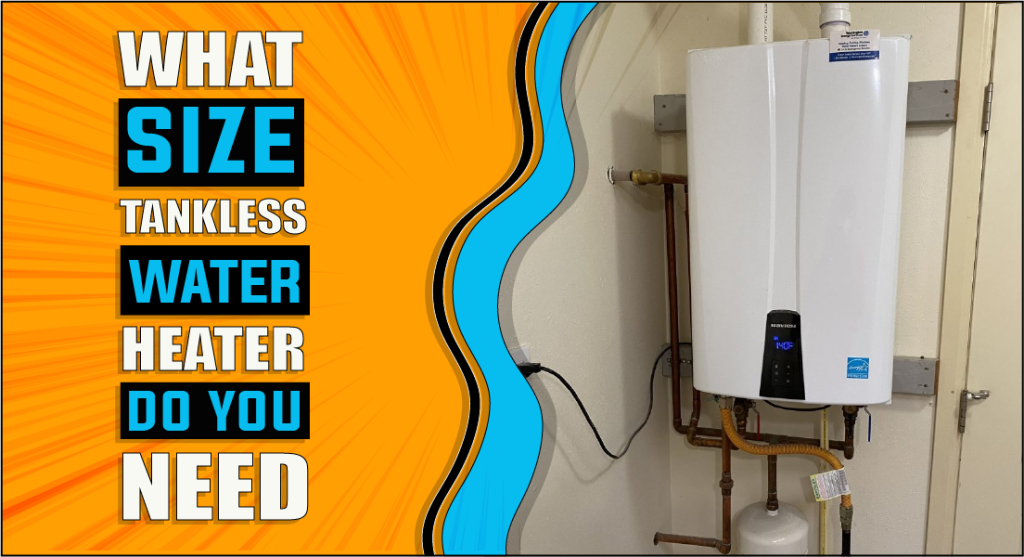
Understanding tankless heater sizing
Understanding tankless heater sizing is crucial when selecting a suitable unit. Tankless water heaters are measured in gallons per minute (GPM), indicating the amount of hot water they can provide per minute. Several factors should be considered to determine the appropriate size.
Determining your specific needs is essential in making informed decisions for sizing. Understanding and identifying your needs can lead to more satisfying outcomes, Whether in personal relationships, professional settings, or even technology assessments.
How to Select the Right Size Tankless Water Heater
Selecting the right size tankless water heater is crucial to ensure a steady hot water supply in your home. Here are some steps to help you make the right choice.
Step 1: Examine the number of devices
Determine the maximum number of devices you want to run simultaneously and their total flow rate. This includes fixtures such as showers, sinks, and appliances like dishwashers and washing machines. By calculating the flow rate for each device, you can get an estimate of the total hot water demand.
Step 2: Peak Usage Scenarios
Next, consider the peak usage scenarios in your household. Identify times when multiple devices run simultaneously, such as during morning routines or when hosting guests. This will help you account for high-demand periods.
Step 3: Consult manufacturer-provided sizing calculators
Try consulting manufacturer-provided calculators or online resources that offer guidelines for proper sizing. These tools can help match your hot water needs with the appropriate tankless water heater capacity.
It’s also important to consider the number of people in your household and their bathing habits. More people generally mean higher hot water demand, so consider this when selecting the size.
Step 4: Seek Professional Plumber Advice
Lastly, seek professional advice from plumbers or water heater specialists. They can assess your needs and provide personalized recommendations based on their expertise.
By following these steps and considering your household’s hot water requirements, you can confidently select the correct size tankless water heater that meets your needs efficiently and effectively.
Examining GPM demands of appliances
Examining the GPM demands of appliances, including heaters, is crucial to understanding the water usage characteristics in a household. Different fixtures and appliances have varying flow rates, measured in gallons per minute (GPM), which determine their impact on water conservation and overall water supply.
For example, high discharge rates of certain appliances can significantly affect water conservation efforts. Understanding the GPM demands of heaters helps identify potential areas for improvement and efficient water usage.
One can refer to resources that provide average flow rates to determine the GPM rating of fixtures and appliances. For instance, a kitchen faucet typically has a GPM rating of 1.5, while a shower may range from 1.5 to 3.0 GPM. These ratings help estimate peak water demand and ensure adequate supply.
In commercial kitchens, GPM calculations are vital in determining water use efficiency. One can calculate the GPM using a simple formula by measuring the time it takes for water to reach the one-gallon mark.
What Size Tankless Water Heater Do I Need For A Family Of 2, 3, 4, 5, Or 6?
Determining the right size tankless water heater for a family depends on several factors, such as the number of occupants and their hot water usage patterns. While there may be variations in recommendations, here are some general guidelines based on the information obtained:
Family of 2:
For a family of 2, a tankless water heater with a flow rate of 6-8 gallons per minute (GPM) is typically recommended. This should provide an adequate supply of hot water for daily needs.
Family of 3:
A family of 3 would require a slightly higher flow rate, ranging from 7-9 GPM. This accounts for the increased demand due to an additional household member.
Family of 4:
The recommended flow rate for a family of 4 is around 8-10 GPM. This accommodates the hot water requirements of an enormous household.
Family of 5:
A family of 5 may need a tankless water heater with a 9-11 GPM flow rate. With more individuals, the demand for hot water increases.
Family of 6 or more:
For a family of 6 or more, a tankless water heater with a flow rate of 11+ GPM may be necessary to meet the higher hot water demands.
Remember, selecting the proper size tankless water heater is crucial for ensuring an uninterrupted supply of hot water and maximizing energy efficiency. If you consider the size of your family and their hot water needs, you can make an informed decision that meets your requirements.
Importance of Tankless Sizing Calculator
When selecting the right tankless water heater for your home or business, using a tankless sizing calculator can be incredibly helpful. Several reputable manufacturers and websites offer tankless sizing calculators to assist consumers in finding the right fit for their needs.
Companies like Rheem®, Noritz, eComfort, and Plumbing Supply provide online calculators that factor in specific variables to recommend the ideal tankless water heater size for residential or commercial applications.
Calculating Tankless Water Heater Capacity
Calculating the tankless water heater capacity is crucial in determining the appropriate size for your hot water needs. It ensures that you have enough hot water without wasting energy or overspending. Here are some key considerations when calculating the tankless water heater capacity:
- Determine the peak demand: Assess your household or business’s peak hot water usage, typically during busy mornings or evenings when multiple appliances or fixtures are used simultaneously. Consider factors such as the number of showers, sinks, dishwashers, washing machines, and other hot water-consuming devices.
- Calculate the flow rate: Each appliance or fixture has a flow rate measured in gallons per minute (GPM). Determine the total GPM required by adding up the flow rates of all appliances and fixtures that may run simultaneously.
- Consider the temperature rise: Determine the desired temperature rise and the difference between the incoming groundwater temperature and the desired hot water temperature. This varies depending on your location and preferences. For example, if the incoming groundwater temperature is 50°F and you want a hot water temperature of 120°F, the temperature rise is 70°F.
- Use a sizing calculator: Utilize an online tankless water heater sizing calculator or consult manufacturer guidelines to determine the appropriate capacity based on your peak demand and desired temperature rise. These calculators consider various factors and provide recommendations for the ideal size.
Conclusion:
In this article, we’ve explored everything you need about what size tankless heater you need. Selecting the right size tankless water heater is crucial for efficiently meeting your hot water needs and ensuring a continuous hot water supply.
You can make an informed decision by considering factors such as peak hot water usage, flow rates, temperature rise, and the number of occupants. Utilizing online calculators or seeking professional advice can further assist in finding the perfect size tankless heater.
Remember, avoiding the pitfalls of under-sizing or over-sizing ensures optimal performance and energy efficiency, which translates to cost savings in the long run. So, choose the correct size now and enjoy a tailored and uninterrupted hot water supply that perfectly suits your needs.
Relevant Questions:
To determine the right size, consider factors such as peak hot water demand, flow rates of appliances, desired temperature rise, and number of occupants. Use online sizing calculators or consult a professional for accurate recommendations based on your specific requirements.
An undersized heater may struggle to meet your hot water needs, resulting in inadequate supply and inconsistent temperatures. It can lead to inconvenience and frustration, especially during peak usage times. Choosing a tankless water heater that matches or slightly exceeds your maximum hot water requirements is essential.
While meeting your hot water demands is essential, oversizing can lead to unnecessary energy consumption and higher costs. A huge heater may operate at lower efficiency levels when operating below capacity. It’s advisable to strike a balance and choose a tankless water heater that meets your needs without excessive oversizing.
Flow rates can vary depending on the appliance or fixture. Manufacturers provide specifications indicating the flow rate in gallons per minute (GPM). These details can be found in product manuals or on the manufacturer’s website. If unsure, consult a plumber who can measure flow rates accurately.
Ella John is passionate about helping her readers make the best choice when purchasing a heater. She understands that selecting a heater can be difficult and strives to provide information to help make the decision easier. Ella’s website, Heatersinfo.com, provides valuable insight into heating trends and types of heaters and tips on how to care for them. She also advises selecting the right heater based on individual needs and preferences. Her expertise in electronics makes her an excellent source of knowledge, and she is confident that anyone who visits her website will find the perfect heater information for their needs. Ella’s dedication to helping others make educated decisions about buying the right heater is unparalleled, and she hopes to continue offering her expertise for many years. With Ella’s help, finding the perfect heater can be a breeze!


